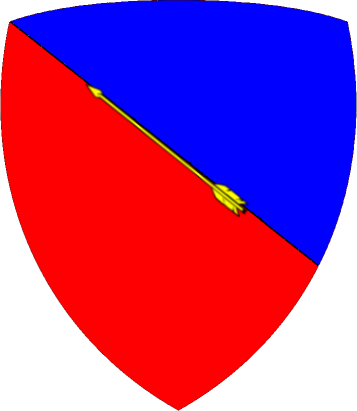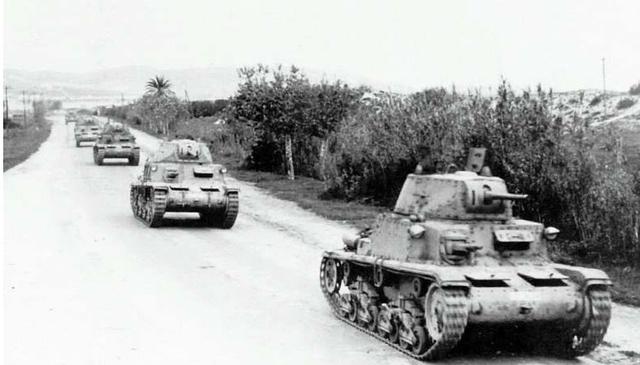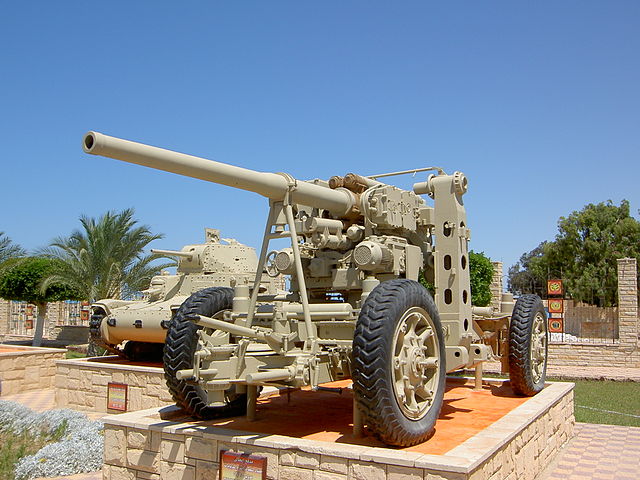Gazala 1942:
The Arrow Division
by Mike Bennighof, Ph.D.
September 2016
 Italy entered the Second World War with three armored divisions at various states of readiness, and a commitment to expand her tank forces as soon as Italian production of armored and soft vehicles allowed. In practice, that never took place; Italy could not supply enough tanks to get all three of her existing armored divisions into the field at once, with only two of them at most in long-term action at any one time. Italy entered the Second World War with three armored divisions at various states of readiness, and a commitment to expand her tank forces as soon as Italian production of armored and soft vehicles allowed. In practice, that never took place; Italy could not supply enough tanks to get all three of her existing armored divisions into the field at once, with only two of them at most in long-term action at any one time.
As in other armies, Italy initially developed two distinct types of mechanized divisions: three armored divisions, rooted in the infantry branch, and three celere or “fast” divisions, originating with the cavalry. The celere divisions had two regiments of horsed cavalry and one of Bersaglieri mounted in trucks or on bicycles, a motorized artillery regiment and a detachment of tanks.
All three celere divisions deployed in northern Italy at the start of the war and participated in the invasion of Yugoslavia in the spring of 1941. Yugoslav resistance collapsed in a few weeks, and the 1st “Eugenio di Savoia” and 2nd “Emanuele Filiberto Testa di Ferro” celere divisions settled into occupation duty, transferring some of their artillery and anti-tank guns to the 3rd “Principe Amadeo Duca d’Aosta” Celere Division, which joined the Italian corps deployed to the Eastern Front.
The 2nd Celere Division operated in Bosnia, fighting partisans of multiple alignments alongside the murderous Croatian Ustache nominally aligned with the Axis powers. Losses of men and horses slowly but steadily mounted in a savage war of ambush and counter- ambush, with few replacements provided to a division far from the front lines.

The Italian M14/41 medium tank.
But things changed in the spring of 1942. In late April, division commander Enrico Kellner received orders to move his division from Bosnia to Bologna, there to commence re-training and re-equipping for conversion to an armored division. The horses and vehicles went to bring the 1st Celere Division closer to establishment strength, and the troops returned to Italy.
There they received new vehicles and weapons, and the cavalrymen began training in all of the many new skills needed. Kellner’s horsemen received the most modern tanks in the Italian arsenal, the M14/41 medium tank (a somewhat improved model of the standard M13/40) and gunners began to train with the new Semovente 75/18 assault guns. Kellner does not appear to have received many if any trained drivers (not many Italians learned to drive in civilian life during the 1930’s); most of these scarce men were needed to replace losses in North Africa and bring the 131st “Centauro” and 133rd “Littorio” armored divisions up to full strength for deployment at the front.
The division received a new number and name, becoming the 134th “Freccia” (“Arrow”) Armored Division, and a new table of organization. As an armored division, Freccia would follow the organization adopted by other similar units in late 1941. The 10th “Lancieri di Vittorio Emanuele II” horsed cavalry regiment would become a three-battalion tank regiment, 6th Bersaglieri Regiment (dispatched to the Eastern Front) would be replaced by the motorized 1st Bersaglieri with the I, VII and IX Battalions.

Two models of the Italian Semovente M40 with 75mm guns.
The 2nd Celere Artillery Regiment would expand greatly. It would retain its two battalions of towed 75/27 Model 11 field guns and one of towed 105mm howitzers. The regiment would add two battalions of Semovente 75/18 assault guns and one of 90mm anti-aircraft guns, a weapon very similar to the German 88mm gun in look and performance but an Italian design used in anti-tank and light artillery roles as well as against aircraft, in a similar manner to the German Flak 18.
The division’s other horsed regiment, the 9th “Lancieri di Firenze,” went to Albania to help form a new independent cavalry brigade. A new formation, taking the name 8th “Lancieri di Montebello” but formed at the 9th’s depot in Ferrara and including many of its troopers, would serve as the new division’s reconnaissance battalion and operate L6 light tanks.
Training and equipping proceeded slowly through the summer of 1942. Following the Axis failure to break through the Alamein position in July 1942 it became obvious that the Freccia division would not be ready for action any time soon as men and machines were needed for the battered divisions at the front. In August the 10th Lancers along with men and equipment from the other units were transferred to the 135th “Ariete II” Armored Division, and Kellner re-constituted his division as a horsed cavalry outfit under its old number and name. It spent the rest of the war on occupation duty in southern France, returning to Italy in September 1943 to be disbanded.

The Italian-made Breda 90mm anti-aircraft gun.
Just why the Italian leadership thought they could double the number of armored divisions within the Royal Army when they could not fully equip those they had is difficult to discern. A number of leading Italian generals held director’s seats at the Fiat-Ansaldo industrial combine that built Italy’s tanks (part of the institutionalized corruption that formed the essence of the fascist state), so it should have been no secret to them that Italy could not produce enough armored vehicles to field six armored divisions. But Germany had doubled the number of her armored divisions in late 1940, and Benito Mussolini felt a need to match the Germans. The Germans had done so by drastically reducing the number of tanks in each division; that option wasn’t really open to the Royal Italian Army, which already operated its armored divisions with a smaller number of tanks (a little over 180; a German panzer division had slightly less than 200 on paper).
Fiat-Ansaldo cranked out about 60 new tanks per month, most of which went to either build up the existing armored divisions or replace losses at the front. Equipping new armored divisions would have required a major expansion of Italian industrial plant, which in turn would have required that Fiat-Ansaldo loosen their stranglehold on Italian tank production. With the generals profiting directly from the company’s sales, that wasn’t likely. The Freccia division would remain an unrealized plan.
Even so, we’ve added the 134th “Freccia” Armored Division to our Gazala 1942 game, as part of our Heat Wave 2016 Golden Journal. Gold Club members get real laser-cut and mounted playing pieces for the division, and a scenario for their use (an all-Italian Axis effort, without Rommel or his panzer divisions).
Click here to order Gazala 1942.
And click here to join the Gold Club
Mike Bennighof is president of Avalanche Press and holds a doctorate in history from Emory University. A Fulbright Scholar and award-winning journalist, he has published over 100 books, games and articles on historical subjects.
He lives in Birmingham, Alabama with his wife, three children and his dog, Leopold.
|
